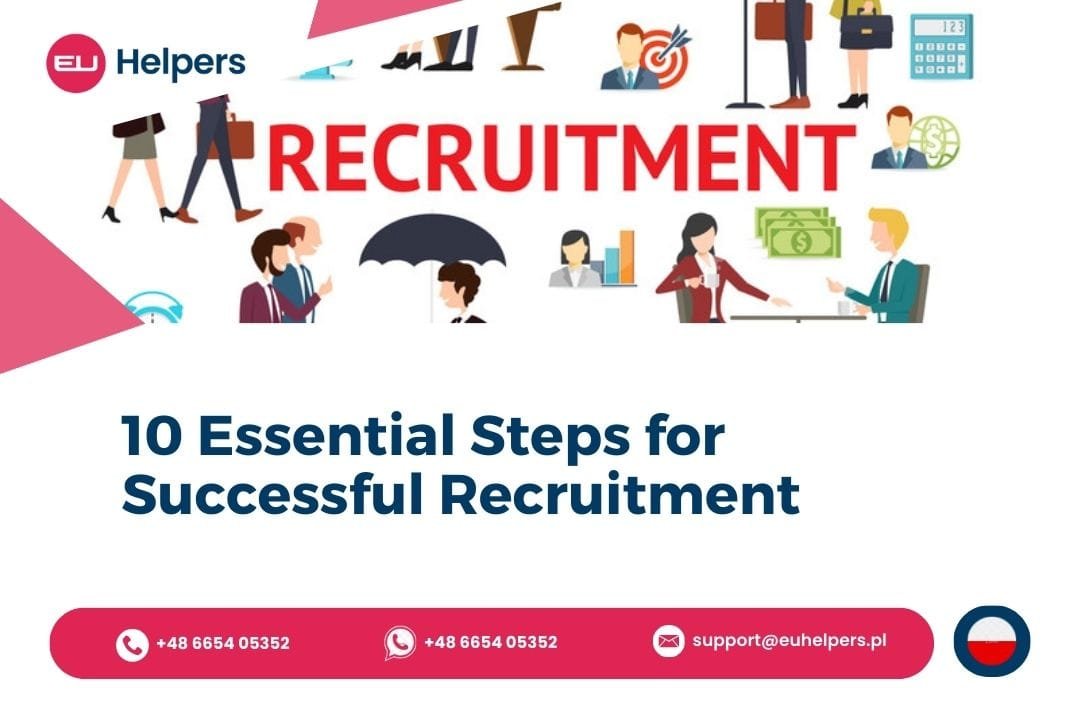The recruitment process is a well-thought-out sequence of stages, starting from crafting job descriptions to sending out offer letters, aimed at attracting, evaluating, and hiring appropriate candidates. It encompasses recruitment marketing, scouting for passive candidates, leveraging referrals, ensuring a positive candidate experience, fostering team collaboration, conducting assessments, managing applicant tracking, adhering to compliance regulations, and facilitating smooth onboarding.
The recruitment process encompasses all the stages from crafting job descriptions to extending offer letters, including initial applications, screenings (such as phone or one-way video interviews), face-to-face interviews, assessments, background checks, and other essential elements crucial for making successful hires.
Breaking down these steps into 10 focal areas ensures a comprehensive approach, allowing organizations to recruit top talent efficiently. While each organization's recruitment process may vary based on factors like size, industry, and existing practices, the overarching objectives remain consistent: to find and hire the best candidates quickly and at scale.
10 Key Steps in the Recruitment Process:
1. Recruitment Marketing: Utilizing marketing strategies to attract top talent, including creating compelling job ads, leveraging industry-specific channels, and maintaining engaging careers pages.
2. Passive Candidate Outreach: Broadening the candidate pool by connecting with individuals who may not actively seek employment opportunities.
3. Employee Referrals: Harnessing the existing employee network to source candidates efficiently, leading to faster recruitment, enhanced retention, and reduced costs.
4. Candidate Engagement: It's crucial not only to attract candidates but also to keep them actively involved throughout the recruitment process.
5. Collaborative Hiring: Streamline communication among internal teams to align hiring objectives and optimize team efforts.
6. Fair Candidate Assessments: Conduct interviews and evaluations with fairness and consistency, ensuring all candidates are assessed based on clear criteria.
7. Applicant Tracking: View hiring as a strategic business function, emphasizing the importance of finding top talent to drive organizational success.
8. Reporting, Compliance & Security: Maintain compliance and data security standards throughout the recruitment process.
9. Seamless Integration: Ensure compatibility and compliance with hiring tools to facilitate a smooth recruitment process.
10. Onboarding and Support: Extend the recruitment process to include effective onboarding and ongoing support for newly hired employees to enhance retention and reduce future hiring costs

